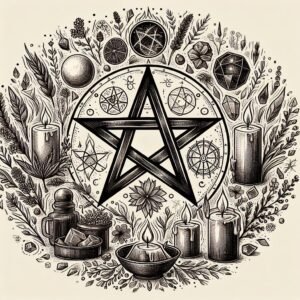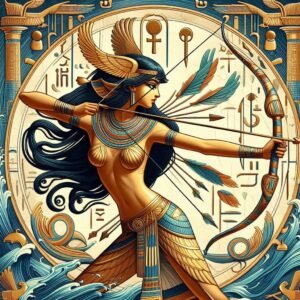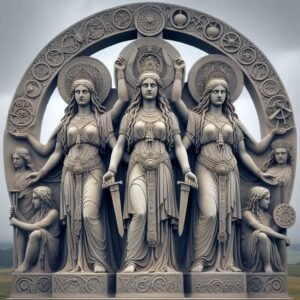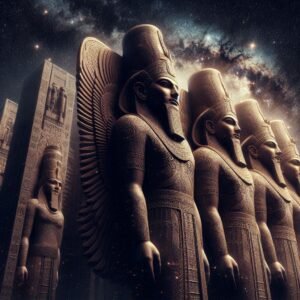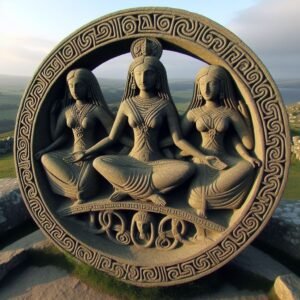
Ninlil was a prominent goddess in Mesopotamian mythology, particularly associated with the air and wind. She was the wife of Enlil, the god of earth, wind, and storms, and shared many of his responsibilities, including declaring destinies. Ninlil was also known as Sud and was worshipped primarily in the cities of Nippur and Shuruppak. She was depicted as a young woman with wings, symbolizing her connection to the air. As the mother of several important deities, including the moon god Nanna and the underworld god Nergal, Ninlil played a significant role in the Mesopotamian pantheon.
Enlil was a major deity in Mesopotamian mythology, revered as the god of wind, air, earth, and storms. He was one of the most powerful gods in the Sumerian pantheon and later worshipped by the Akkadians, Babylonians, Assyrians, and Hurrians.
Myths and legends
Ninlil appears in several significant Mesopotamian myths. One of the most notable is the myth of “Enlil and Ninlil,” which tells the story of how Enlil, the god of wind, saw Ninlil bathing in a canal and impregnated her. As a result, Enlil was banished to the underworld, but Ninlil followed him. During their journey, Enlil assumed various guises and impregnated Ninlil multiple times, symbolizing the life cycle of grain and the process of wind pollination.
Another myth involving Ninlil is “Enlil and Sud,” where Sud, a goddess from Shuruppak, marries Enlil and is renamed Ninlil. This myth highlights her transformation and integration into the pantheon as Enlil’s consort. These stories reflect her roles in fertility, agriculture, and the natural elements.
Sud was a prominent goddess in ancient Sumerian mythology, particularly associated with the city of Shuruppak. She was revered as the goddess of grain and the air, reflecting her importance in agricultural and atmospheric domains. Sud was later syncretized with Ninlil, the wife of Enlil, one of the chief deities in the Sumerian pantheon. This syncretism led to Sud inheriting many of Ninlil’s attributes and roles, including her association with healing and destiny. Shuruppak, where Sud was primarily worshipped, was an ancient city located on the banks of the Euphrates River, known for its significant contributions to early Mesopotamian civilization.
As the wife of Enlil, the chief god of the Sumerian pantheon, she was revered as the Queen of Heaven and Earth. Sud was associated with fertility and motherhood, embodying the nurturing aspects of life and the cosmos. She also had a significant role in maintaining harmony and balance in the universe, reflecting her importance in the divine hierarchy.
In addition to her maternal and nurturing attributes, Sud was linked to healing and destiny. Her syncretism with Ninlil brought her associations with healing goddesses and the power to declare destinies. This made her a vital deity in the Sumerian belief system, influencing both the physical and spiritual well-being of her worshippers.
Symbols and animals
Ninlil was associated with several symbols and sacred animals in Sumerian mythology. One of her primary symbols was the ear of grain, reflecting her role as a goddess of fertility and agriculture. Additionally, she was often depicted with a staff or scepter, symbolizing her authority and divine power.
In terms of sacred animals, Sud was linked to the cow, which represented fertility and abundance. The cow’s nurturing nature aligned with Sud’s role as a mother goddess and a provider of sustenance.
The cow symbolized fertility, abundance, and nurturing, which aligned perfectly with Sud’s role as a goddess of fertility and motherhood. This connection emphasized her importance in agricultural societies, where the cow was a vital source of sustenance and prosperity. The nurturing nature of the cow mirrored Sud’s own attributes as a mother goddess, reinforcing her role as a provider and caretaker for her people.
Subscribe to our post updates - Don't miss a thing!!

